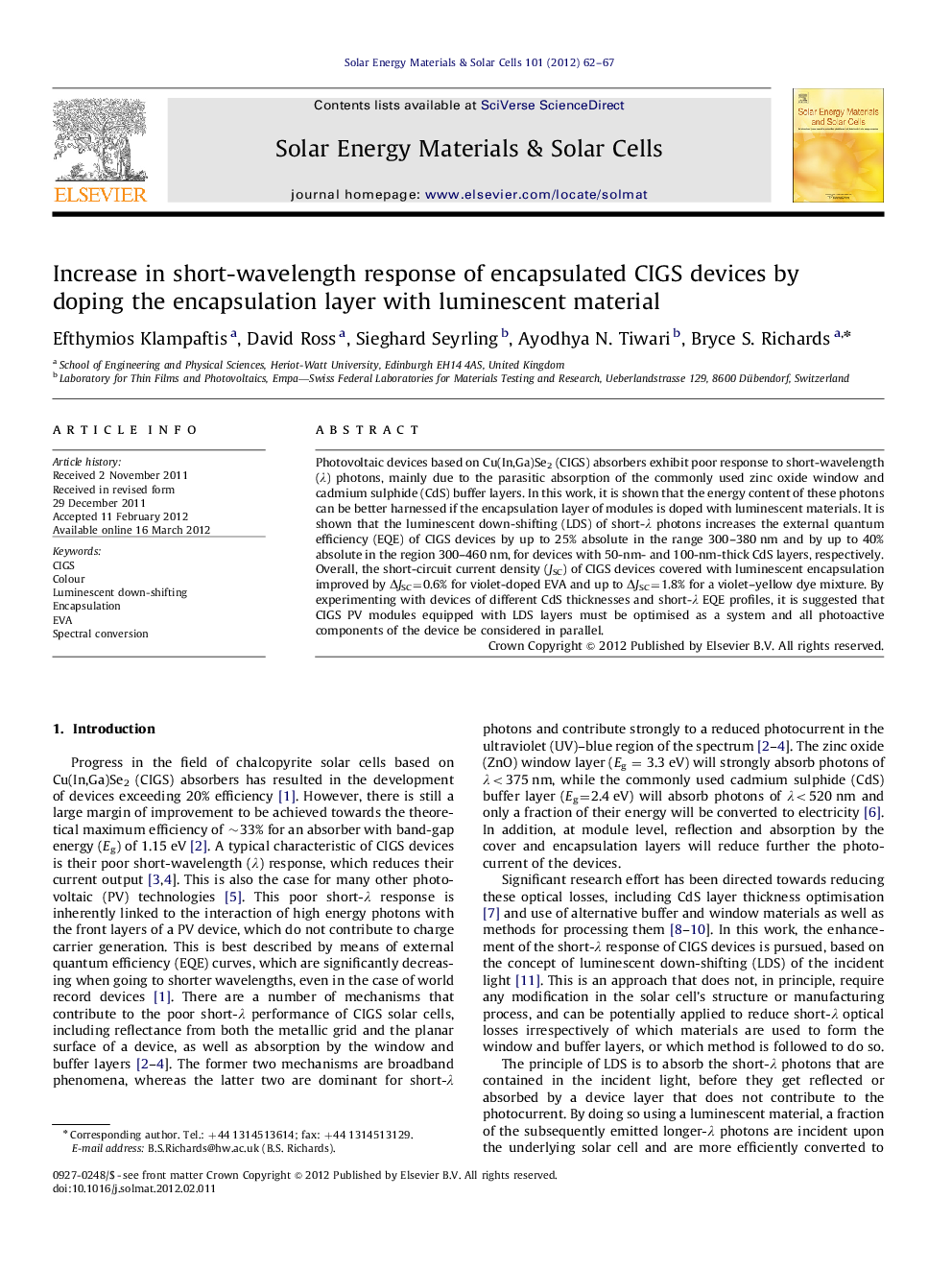| Article ID | Journal | Published Year | Pages | File Type |
|---|---|---|---|---|
| 79276 | Solar Energy Materials and Solar Cells | 2012 | 6 Pages |
Photovoltaic devices based on Cu(In,Ga)Se2 (CIGS) absorbers exhibit poor response to short-wavelength (λ) photons, mainly due to the parasitic absorption of the commonly used zinc oxide window and cadmium sulphide (CdS) buffer layers. In this work, it is shown that the energy content of these photons can be better harnessed if the encapsulation layer of modules is doped with luminescent materials. It is shown that the luminescent down-shifting (LDS) of short-λ photons increases the external quantum efficiency (EQE) of CIGS devices by up to 25% absolute in the range 300–380 nm and by up to 40% absolute in the region 300–460 nm, for devices with 50-nm- and 100-nm-thick CdS layers, respectively. Overall, the short-circuit current density (JSC) of CIGS devices covered with luminescent encapsulation improved by ΔJSC=0.6% for violet-doped EVA and up to ΔJSC=1.8% for a violet–yellow dye mixture. By experimenting with devices of different CdS thicknesses and short-λ EQE profiles, it is suggested that CIGS PV modules equipped with LDS layers must be optimised as a system and all photoactive components of the device be considered in parallel.
► CIGS solar cells were encapsulated using luminescent ethylene vinyl acetate layers. ► The short-wavelength response was greatly improved via luminescent down-shifting. ► The photocurrent and efficiency increase as a result. ► This enhancement is achieved for devices with different cadmium sulphide thickness. ► Coloured devices can be manufactured with this technique.
